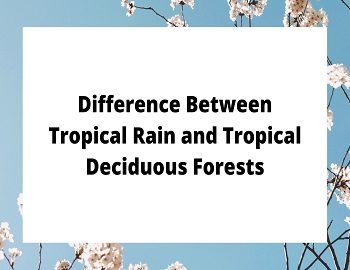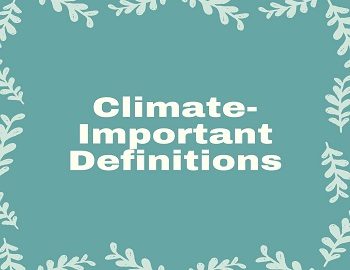Tropical Rain and Tropical Deciduous Forests:
The following are the points of difference between Tropical Rain and Tropical Deciduous Forests.
| Tropical Rain Forests | Tropical Deciduous Forests |
|---|---|
| The regions having tropical climate throughout the year have the cover of tropical rain forests with an average annual rainfall of more than 200 cm. | Tropical Deciduous Forests are spread over the areas where two distinct seasons, rainy and dry- are found with an average annual rainfall of 70-200 cm. |
| Tropical evergreen forests are divided into two groups. The moist evergreen and the dry evergreen forests. | These forests are of two types- the moist deciduous and the dry deciduous forests. |
| These forests are evergreen. They do not shed their leaves in any season of the year. | They shed their leaves once a year to minimize evaporation during the dry season. |
| Trees reach great heights up to 60m or above. | They are less than 50 metres in height. |
| Tropical Rain Forests are found in the western slope of the western ghats(especially the Malabar coast), hills of the northeastern region and the Andaman & Nicobar Island. Also Silent Valley in Kerala. | These forests are spread almost all over India. Moist forests are found in the northeastern states along the foothills of the Himalayas, eastern slopes of the western ghats, and Orissa. Dry forests are found in the plains of Uttar Pradesh, Bihar & West Bengal, most of the areas of the Deccan plateau and in the rain shadow areas of western ghats. |
| Tropical evergreen forests are dense forests and one species is not found in one place. | These forests are less dense. Trees of one species are found at one place. |
| They are of little importance as their wood is hard and unusable in economic activities. | Their wood is soft and durable. Hence they are economically important forests. The wood is used as timber. |
| Abnus, Mahogony, Aini, Ebony, Rosewood, Cinchona, Cedar, Hollock and Kail are representatives trees of these forests. | Teak (Tectona grandis), sal, shisham, hurra, mahua, amla, semul, kusum, sandalwood, tendu, palas, amaltas, bel, khair and axlewood represent these forests. |









Comments (No)